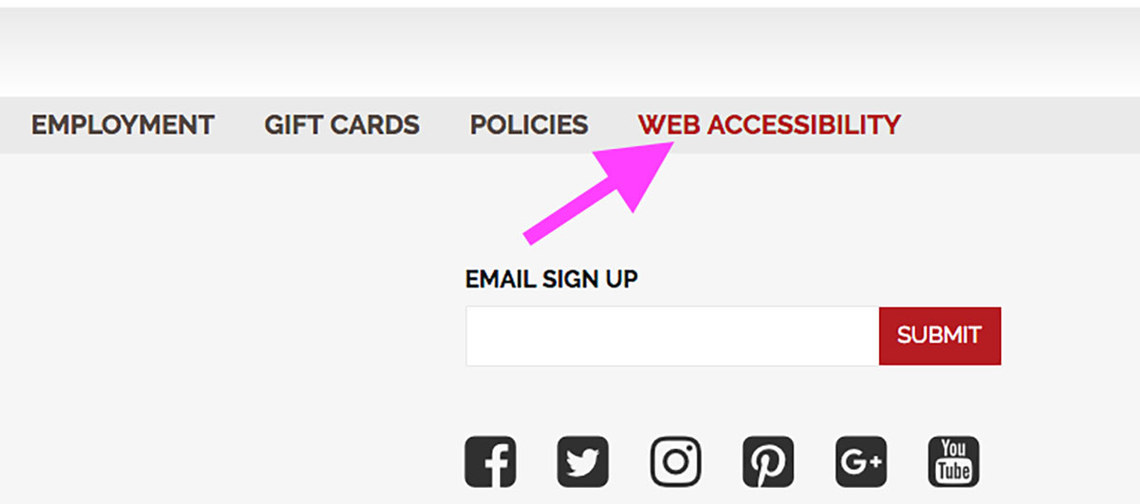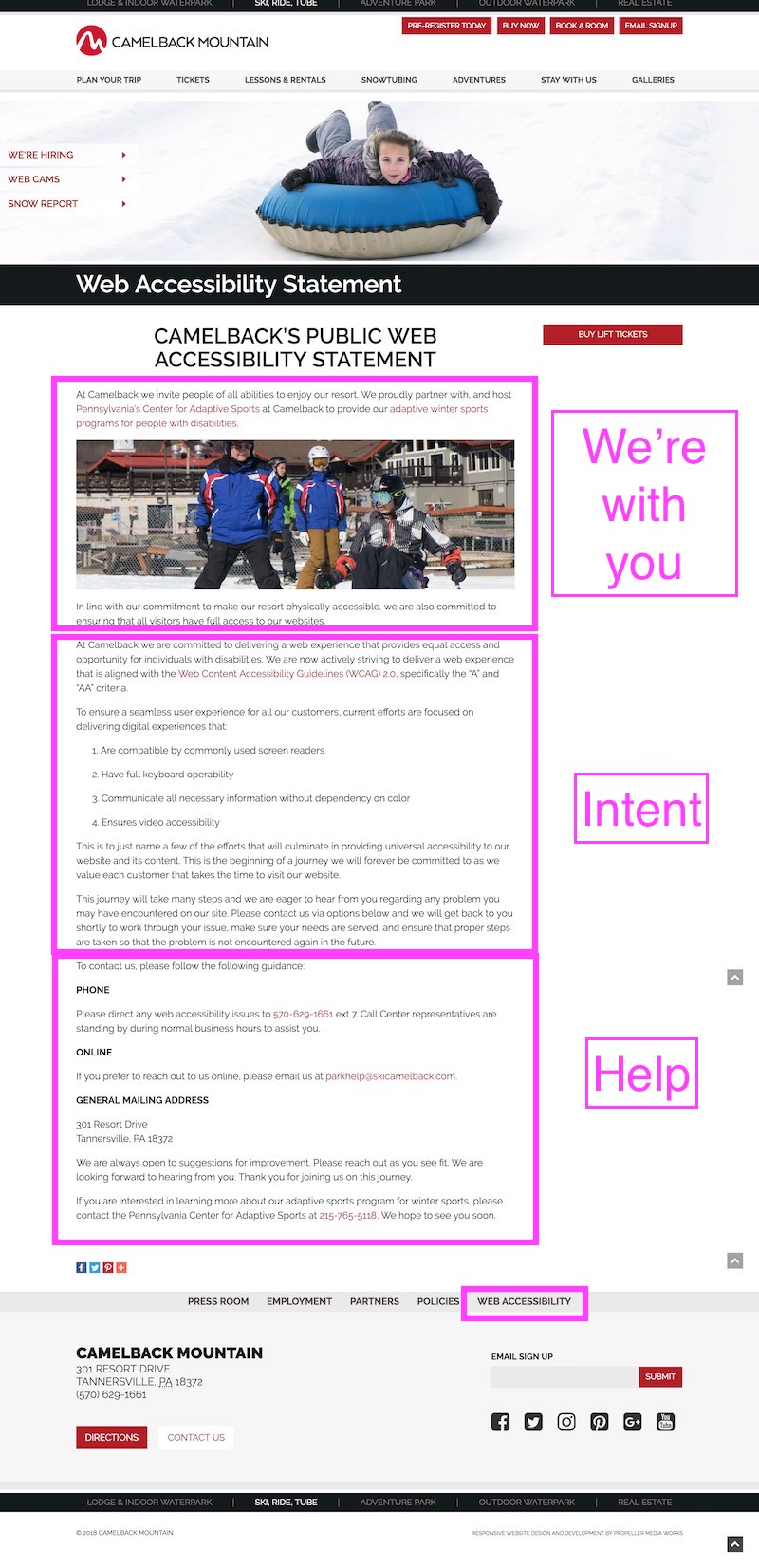
Web Accessibility Best Practices: Statement vs Policy
In 2017 we saw a spike in web accessibility demand letters and suits. The ski resort industry alone saw at least 40 websites hit with lawsuits. Website owners are scrambling to either build new accessible WCAG compliant website, or audit and remediate their existing websites. Of debate is whether or not to publish anything at all, and if so, should it be a "policy" or a "statement".
I wrote a very similar post to this in September 2017 and pointed to CapitalOne's "Accessibility Commitment" as a good example. However, you're probably not a CapitalOne, so this post is aimed at smaller scale companies.
Disclaimer: We are not lawyers and are not qualified to offer legal advice.
PUBLISH SOMETHING OR NOTHING
It's my opinion that you definitely should. First, it sends a signal to trolls that you are actively pursuing an accessibility program (even if you're not there yet). If such trolls are only looking for low-hanging fruit, you're not anymore. Second, to a real person with disabilities, if it's presented well, this should let that person know that you're working on it, and very importantly provide a way to reach you for help.
Another question will be when to publish. The answer might depend on the nature of your brand. If you're a touchy-feely consumer brand with a highly critical audience, then you might need to already be down the path of remediation that reveals effort. For others, I suggest the earlier the better.
WEB ACCESSIBILITY STATEMENT VS POLICY
What I most often see are Policies published that are more often not "borrowed" from other websites. I don't know if these decisions are based on advice from a lawyer or just because "they did it". In either case, I'd suggest not publishing a Policy. First, its something you can be held to. Second, it doesn't communicate effectively to your intended audiences. Consider those audiences:
- An actual person with disabilities
- A trolling plaintiff law firm
I suggest putting emphasis on what is important to communicate to the person with a disability who is trying to use your website first. If you nail that well, then you will be effectively communicating to the trolls that you are not a good target.
WEB ACCESSIBILITY POLICY
To the trolling plaintiff law firm, the policy approach does at least show that you are paying attention, but a policy with details about all the steps you claim to be making will likely provide them with ammunition if you fail.
To the person with disabilities, a policy designed to protect the company instead of helping this special visitor will come across as you might expect. It might even make this person even angrier, and push them toward litigation instead of away.
WEB ACCESSIBILITY STATEMENT
Instead, I recommend publishing a web accessibility statement. Such a statement should be written with a sensitive human tone that communicates two things: intent, and the path to assistance. Although I'm sure a lawyer might argue with me, I might even begin by acknowledging that the current website is not yet fully accessible. But your intent is to make it so by meeting the Web Content Accessibility Guidelines (WCAG 2.0 AA). And then in the meantime, this is how to reach us for help or feedback.
Announce Your intent and goals.
- Your wish is to make your website accessible to all visitors. It's not yet.
- Your goal is to provide universal access to your website by following WCAG 2.0 AA guidelines. But this will be a work in progress.
- Its ok to publish this before you reach conformity. That said, it might be good to first do a thorough audit (software + manual + assistive technology testing) and at least check off some of the basic items before publishing. It depends on the nature of your brand and audience.
Help and Feedback
- It's important to enable a person with a complaint or need of assistance to contact you.
- Phone number - bonus if toll-free manned 24-7
- Chat service (that is accessible)
- Form (that is accessible)
EXAMPLE OF A WEB ACCESSIBILITY STATEMENT
We work with many ski resorts, and many offer specific adaptive programs for people with disabilities. So, in such cases, we start by sharing that demonstrate what the resort already does and that "we're with you". Next, we express the Intent of the resort to meet WCAG, etc. Then we provide a clear path to get help and provide feedback.

Visit Camelback's Web Accessibility Statement
Finally, the last point is where the link to this page should live. It should be easily accessible from every page. Typically its found in the footer next to the privacy policy.
I hope this helps. Let us know if we can help.